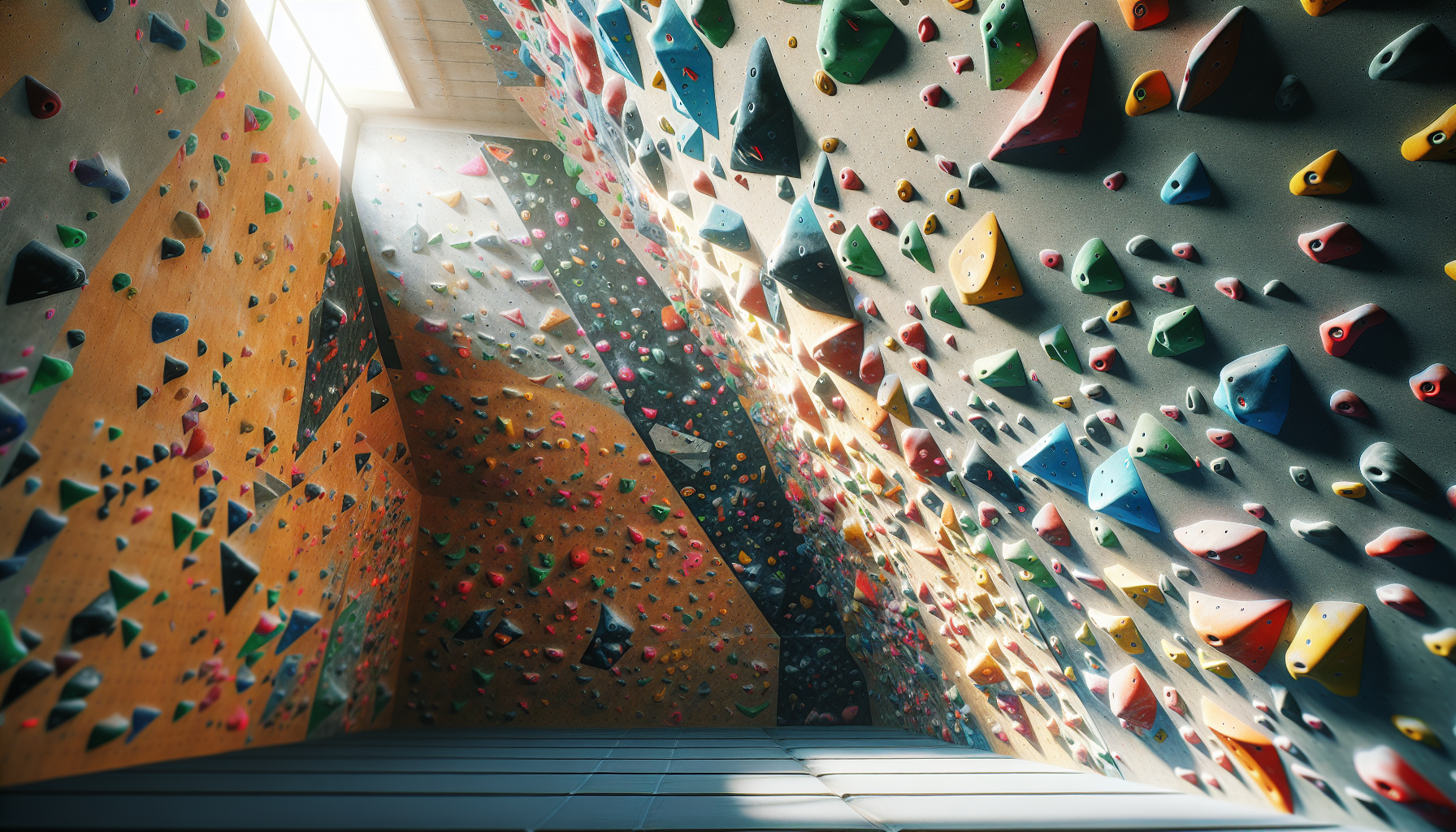
Engaging in a dynamic sport can be a thrilling way to boost physical prowess and mental acuity. A thoughtfully designed training program is essential for climbers aiming to improve their abilities and tackle challenging routes.
These structured routines not only enhance endurance but also build the strength required for demanding climbs.
Targeted exercises focusing on core stability and grip strength play a vital role in effective training.
Incorporating flexibility workouts is crucial, helping to minimize the risk of injuries while navigating various terrains. By tailoring exercise regimens to align with personal goals and skill levels, every participant can elevate their performance, ultimately leading to a more fulfilling experience on the wall.
Effective Strength Training For Climbers
To excel in vertical challenges, climbers must develop targeted physical skills that enhance their overall performance. Prioritizing specific strength workouts is critical because they directly contribute to improved physical fitness.
Movements that focus on the shoulders, arms, and fingers are particularly beneficial.
For instance, pull-ups serve as an excellent method to strengthen the upper body, while exercises like dead hangs significantly enhance grip strength.
Incorporating core workouts is also essential, as a strong core provides the stability required for effective movement on both climbing walls and bouldering problems. It’s crucial to maintain proper form and technique during these exercises to prevent injury and maximize results.
Regularly including these strength training routines can lead to notable gains in endurance and power when scaling challenging routes.

Essential Bouldering Exercises To Try
Embracing a diverse training regimen is key to unlocking a climber’s full potential. By integrating specific workouts into your routine, you can enhance vital skills that contribute to success on the rock.
Core stability is crucial; for example, variations of planks help develop balance and body control, while hanging leg raises boost core engagement, aiding in precise foot placements.
Developing finger strength stands at the forefront of this training plan, with dead hangs serving as a foundational exercise for grip endurance.
Campus board workouts promote explosive finger power, vital for tackling difficult routes.
Dynamic movement drills like traverses enhance efficiency, while jumps between holds improve reach and explosive power, essential for challenging climbs.
Precision in footwork cannot be overlooked; silent feet exercises train for quiet placements, whereas smearing drills enhance grip on diverse surfaces. To further elevate performance, plyometric sessions, such as box jumps, play a significant role in fostering the explosive leg power required for demanding boulder challenges.
Climbing Training
- Core stability exercises, such as planks and hanging leg raises, improve body control and foot placement accuracy.
- Dead hangs are crucial for building grip endurance, while campus board workouts enhance explosive finger strength.
- Dynamic movement drills, including traverses and jumps between holds, are essential for climbing efficiency and power.
- Plyometric exercises like box jumps develop the explosive leg power needed for challenging boulder problems.
Tips For Improving Finger Strength
Developing grip capability plays a crucial role in various physical activities, particularly in disciplines where precise hand control is necessary. This aspect of fitness not only enhances overall performance but also minimizes the risk of injury.
A well-structured training program should feature gradual progression to maximize both safety and outcomes.
Starting with a hangboard can be beneficial, as it allows beginners to build a solid foundation before moving on to pull-up exercises that are more demanding.
For boulderers, incorporating isometric holds can significantly improve endurance and grip strength over time. Dynamic movements are also essential; they enhance explosive power, which is critical in the realm of sport climbing.
By remaining consistent in your climbing sessions and monitoring your progress regularly, you can achieve remarkable improvements in your overall strength and stamina.
Crafting A Comprehensive Training Program
Successful climbing demands a well-organized approach that harmonizes various aspects of training. By integrating strength and skill, individuals can significantly elevate their performance on challenging routes.
Establishing personal benchmarks is the first step, helping to outline both short-term and long-term objectives.
The structure of training sessions is vital; a balanced routine can prevent plateauing and promote consistent progress.
Engaging workouts enhance motivation, ensuring that each training time remains fresh. Emphasizing strength exercises that build forearm endurance is essential for powerful ascents.
Skill refinement is equally important; focusing on techniques such as footwork and body tension will lead to smoother climbs. Recognizing the role of rest and recovery, alongside proper nutrition and sleep, is key to maximizing performance gains.
Climbing Performance
- Integrating strength training can enhance climbers’ forearm endurance, leading to better grip and power.
- Establishing personal benchmarks helps climbers set achievable goals and track progress over time.
- A balanced training routine reduces the risk of plateauing and increases the likelihood of consistent improvement.
- Proper rest, recovery, nutrition, and sleep are crucial for maximizing performance enhancement and overall climbing success.
Building Endurance For Bouldering Success
To thrive in the world of climbing, developing a solid base of stamina is essential for optimizing performance during grueling ascents. Understanding the role of endurance is fundamental for any climber aiming to enhance their climbing ability.
This involves mastering both aerobic and anaerobic training techniques that cater to the demanding nature of a bouldering session.
The former emphasizes sustained efforts, while the latter focuses on short, high-intensity bursts essential for tackling challenging routes.
One of the best training approaches to improve endurance includes interval workouts, where climbers alternate between intense activity and brief recovery phases.
This training method effectively simulates the physical demands experienced during a bouldering session. Complementing this, continuous training is crucial for building aerobic capacity, as it promotes longer climbs, enabling athletes to gradually enhance their stamina.
When structuring focused sessions per week, integrating both interval and continuous training is vital for noticeable progress.
It’s the best way to ensure comprehensive endurance development. Incorporating supplemental strength exercises, like the bench press, can significantly boost upper body strength, which supports climbing efforts.
Staying hydrated and maintaining proper nutrition also play critical roles in enhancing endurance activities, allowing climbers to perform at their best throughout the year.
How To Maximize Your Climbing Sessions
To achieve your full potential in the sport, a strategic approach to your time is crucial. By establishing specific goals, you create a clear path for improvement in your training.
It’s advisable to climb three times a week, allowing you to build strength while steadily enhancing your technique.
Careful planning for each session helps you concentrate on essential aspects, such as bouldering grades and power endurance.
Don’t forget the importance of incorporating warm-ups and cooldowns, as they not only enhance performance but also promote injury prevention. Consider supplemental training methods, like lock-off training, to target specific weaknesses and boost your overall capabilities.
Keep a detailed journal of your training to track progress and make necessary adjustments for continuous improvement.
Climbing Training
- Climbing three times a week helps build strength and improve technique effectively.
- Strategic session planning focuses on essential skills like bouldering grades and power endurance.
- Incorporating warm-ups and cooldowns can enhance performance and prevent injuries.
- Keeping a detailed training journal helps track progress and facilitates necessary adjustments for continuous improvement.
Incorporating Body Weight Exercises In Your Routine
Integrating effective workouts into your training regimen can significantly boost your climbing journey. Utilizing your own body as resistance builds essential strength while enhancing bouldering skills.
To reap the maximum rewards, it’s beneficial to schedule multiple sessions per week that emphasize core strength and promote a full range of motion.
Essential movements like push-ups, pull-ups, and planks specifically target muscles vital for executing proper climbing moves.
Including preparatory exercises not only fortifies grip strength but also improves stability, both critical for navigating more challenging routes. Strive for a well-rounded routine that incorporates mobility work, supporting recovery while maintaining flexibility.
This holistic approach will ultimately lead to improved endurance and refined technique on the climbing wall.
Enhancing Performance With Power Endurance Training
To excel in climbing, athletes must prioritize a balanced approach that incorporates both strength and endurance techniques. By focusing on improvements in strength, climbers can effectively tackle new climbing challenges and boost their overall performance.
This training method highlights the importance of integrating high-intensity strength exercises with endurance training, allowing participants to maximize their potential.
Following exercises such as circuit training can significantly enhance endurance and maintain strength gains during fatigue.
A carefully crafted training schedule that emphasizes overload and recovery ensures climbers can reach their peak potential. By improving specific facets of the sport, athletes experience faster recovery times, ultimately enriching their climbing journey.
Climbing Training
- A balanced training approach improves both strength and endurance in climbers.
- High-intensity strength exercises, when integrated with endurance training, maximize athletic potential.
- Circuit training can enhance endurance while preserving strength gains during fatigue.
- A well-structured training schedule focusing on overload and recovery leads to peak performance in climbing.





